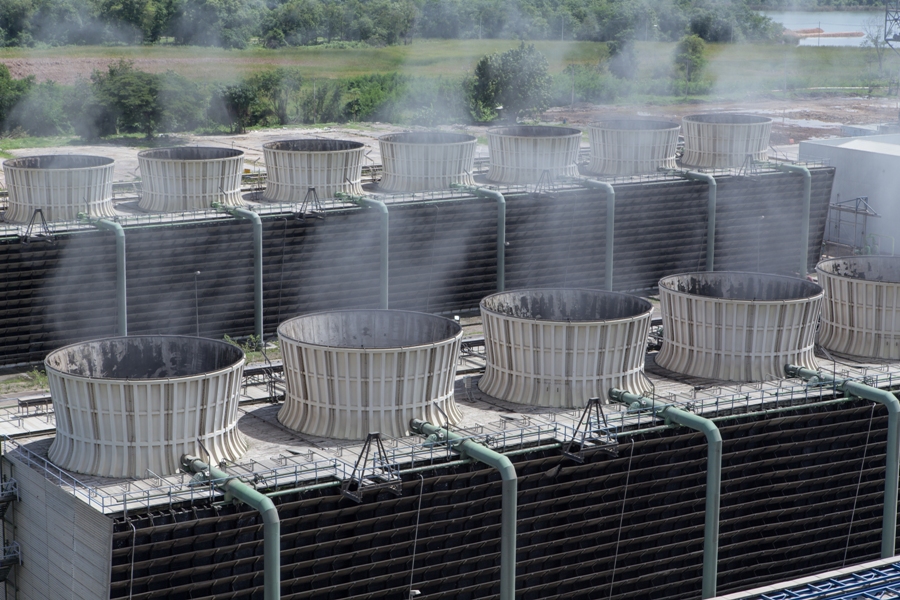Industrial cooling refers to the thermal energy transfer through heat conduction, thermal radiation or convection. The cooling is done exceptionally by the industrial cooling towers.
How do they work?
The industrial cooling tower cools condenser water using evaporation cooling. The water is pumped to the cooling tower top as the water flows down to the basin of cooling tower. Thus, as the water flows down the air from the flow plates, it is hauled through and heat is released over water through evaporation.
As the water releases heat it is pumped back to a chiller barrel through piping such that it absorbs more heat and returns then to the cooling tower. Owing to evaporation, the industrial cooling tower system is set such that it controls the water level in the basin to thwart water from evaporating away and also to give fresh water shot to the system referred to as make-up water.
As the float falls down below some programmed level, a valve gets opened to introduce the make-up water into the cooling tower. The cooling towers use solid water leveling system type and these devices of water leveling are required to maintain precise levels and to calibrate in the tower. Generally, the supply of make-up water is from the supply of city water or some well.
Technical Terms of industrial cooling towers
Knowing the technical terms is mandatory and they include:
- Approach – This refers to the difference of the temperature of air entering wet bulb and leaving the temperature in water.
- Bleed- This refers to water poor quality drained to increase water quality in the system.
- Drift- This is the moist water or air droplets from the cooling tower discharged. This is essential, but an unwanted effect and the design of the cooling tower works to reduce this effect.
- Plume- This refers to hot moist air forming dense fog on getting discharged under some conditions by the cooling tower.
- The Evaporation process- This is about how the cooling towers work is explained
- Range- These refer to the difference between the temperatures of leaving and enter water.
The cooling towers featuring high efficiency come with variable frequency drives that are controlled by an outside air temperature. This feature allows the fan to operate in low speeds and saves energy depending on the outside temperature. However, the fan type used for the system and the fan type’s complexity is based on the cooling tower type and its design.
The cooling tower of HVAC also needs regular maintenance of motor, belt and cleaning, besides the water treatment chemicals. In fact, some industrial cooling towers filter unwanted particles using filter from the water. Thus, the cooling towers mostly need some water treatment, regardless of the operation temperatures to ensure good water quality. Thus it becomes mandatory to treat water so that algae and other biological matters are stopped from growing in water.
Cooling Towers are useful for industrial and commercial applications to cool from a chiller the condenser water. The chiller provides a chilled water system for cold water. The chiller absorbs heat of the chilled water using the refrigeration process and transfers the heat to condenser water. Finally, it is delivered to remove the condenser water heat through the cooling tower. Thus, using the evaporation process is helpful in industrial cooling.






























No Comments
Leave a comment Cancel